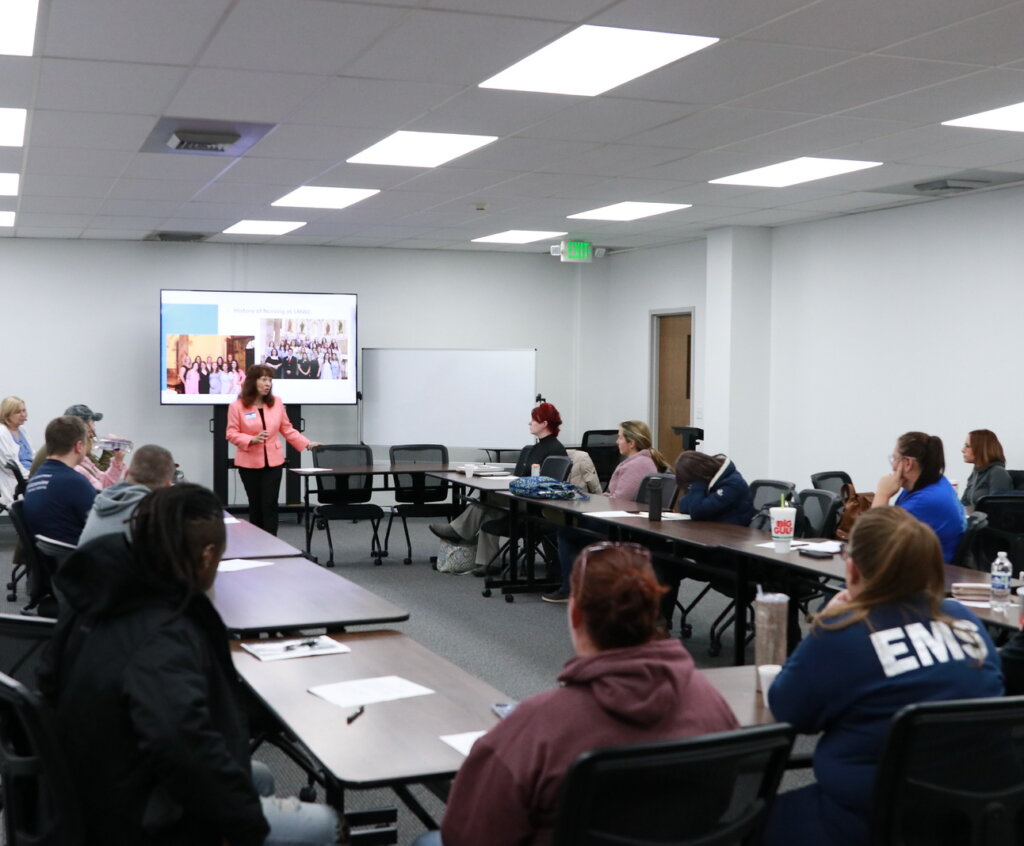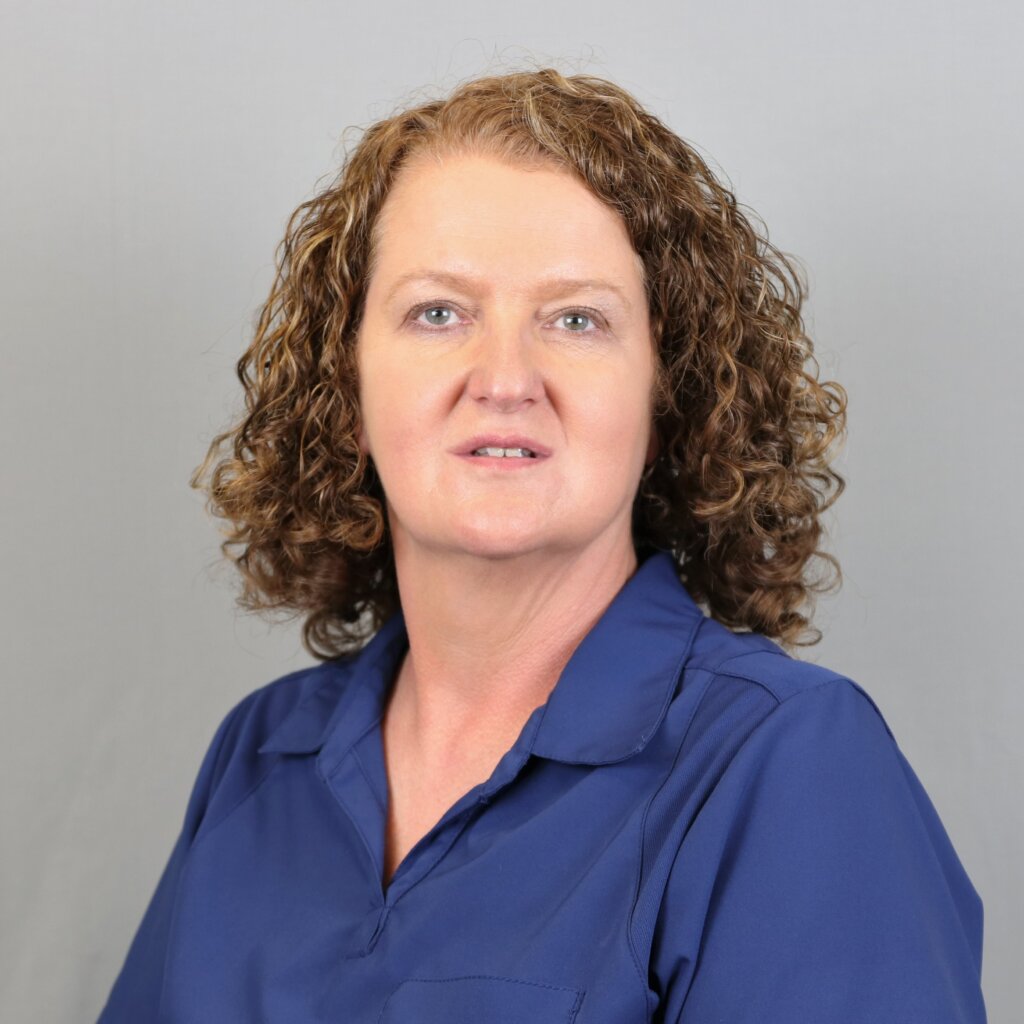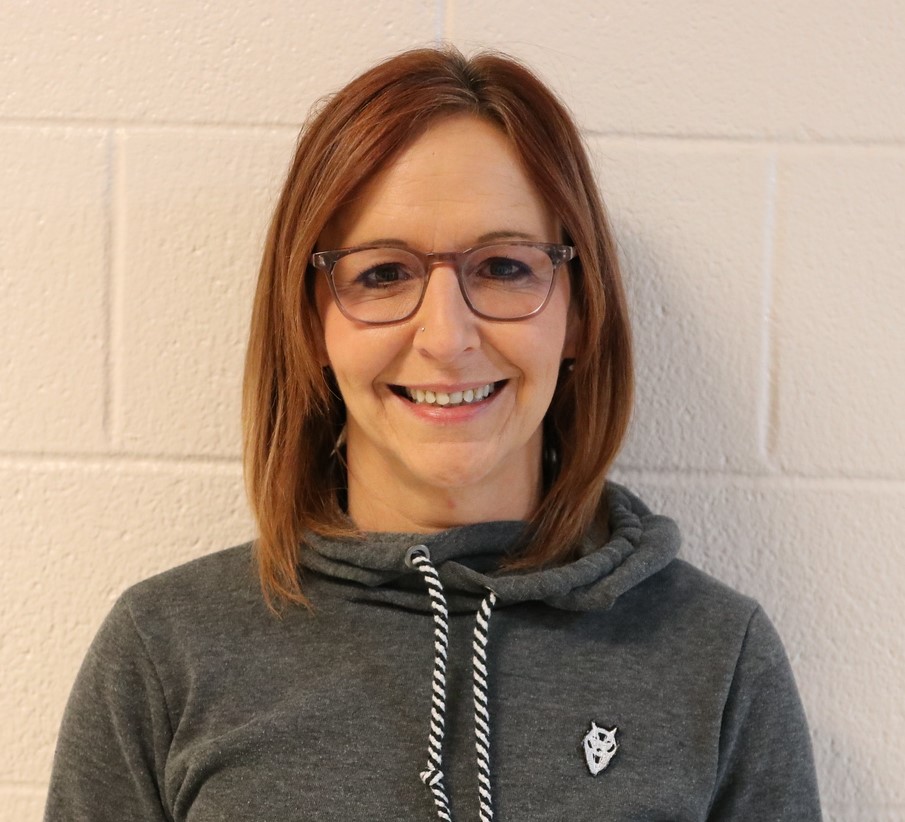This story appeared in the 2023-24 Annual Report issue of Onyx Anneau.
By BJ Riley ’16, ’23G, director of marketing
According to the American Association of Colleges of Nursing, the nursing workforce is expected to grow from 3.1 million in 2021 to 3.3 million in 2031. Additionally, it is projected that over 200,000 additional openings will occur each year through 2031 because of retirements and workforce exits of nurses.

“We will increase the number of professional nurses coming from SMWC by 200% with this program,” said Marcia Miller, Ph.D., RN, dean of the division of nursing and sciences, when asked about the College’s new online program, Paramedics to Bachelor of Science in Nursing (PM to BSN). PM to BSN allows students with paramedic licenses to work toward their Bachelor of Science in Nursing degree while maintaining their paramedic career.
Miller, who came to SMWC in January 2014, was the very first member of the nursing department and was recruited to start the nursing program that opened at SMWC in 2015. In the years prior to coming to SMWC, she had started several programs for other institutions, including an online nursing program. The SMWC nursing program grew from the initial offering of the RN to BSN program to the BSN, the Master of Science in Nursing (MSN) and the Post-Master’s Family Nurse Practitioner Certificate. The BSN program each year has the highest enrollment of any major.
When she began to think about starting the PM to BSN program, she knew that it would have to be online to allow students to continue their careers as paramedics. “I started the Licensed Practical Nurse LPN to BSN at Indiana State University in an online format, so I was comfortable putting together an online nursing program,” Miller said. “I knew it was doable.” While there were several online PM to RN programs available, there was only one other online PM to BSN program in the country. In designing the program, she understood the need for students to bring credits to the program that they might have earned elsewhere in obtaining their paramedic license and in college. “We structure individualized programs of study based on how many college credits and how much paramedic experience the student brings with them,” Miller explained.

Miller presented the program to the Indiana State Board of Nursing in November 2022, and the program was initially approved for 16 seats once a year. In December, she requested the approval be expanded to 24 seats because of the numerous applications submitted in that short time. Miller also asked for the approval of a second cohort each year of 24 seats. The first cohort gathered on campus in January 2023.
Jackie Martin, DNP, RN, came to SMWC in July 2023 as the PM to BSN director. Martin is also the trauma program manager at Union Health Systems in Terre Haute, so she knows what is needed in the field. She also understands the challenges of becoming a BSN as a paramedic. She was a paramedic before she became a nurse. “This program is unique because it is 100% online, and that is what is most appealing. Traditional programs are hard for paramedics because of their work schedules,” said Martin.
The uniqueness of the program is that every student who starts the program already has a paramedic license. “They already have experience in the field and have honed their instincts, so we just build upon them,” explained Martin.

“We work with each student for an individualized program of study based on how many college credits that student brings with them as well as the experience that they have as a paramedic,” said Miller. “Students can get their degree in an average of two years.”
Another unique part of the program is that the students will do clinicals in their home area, which are set up by the students and can become a feeder program for those nursing departments. The program also uses simulation for some of the clinical requirements.
Instructors have had to make some adjustments to this unique program as well. “They are adapting to the variety of levels of knowledge of each student. Because it is online, instructors must be available and respond quickly to students’ needs to maintain the personal touch that the SMWC nursing program is known for,” Martin explained.
In May 2023, Union Health Systems in Terre Haute announced a $250,000 gift over three years to help expand the PM to BSN program to launch the August cohort with 24 more students. “Union came in as a partner with us because this program is innovative, and it is a way to increase the number of professional nurses in the Wabash Valley,” said Miller.
Miller added, “Many paramedics want to further their careers in healthcare. During the pandemic, they were utilized in expanded roles in hospitals and emergency rooms. This just ignited more interest in becoming nurses. Our PM to BSN program will enable them to find a pathway to becoming a nurse with the flexibility to keep their paramedic jobs.”
Currently, there are three cohorts with a total of about 60 students enrolled in the PM to BSN program, with the first graduates expected in May 2025. Inquiries and enrollments have come from students around the country.
Q & A with PM to BSN Student Stephanie McClain
Paramedic from Hodgenville, Kentucky, age 44

Why did you enroll in the PM to BSN program at SMWC?
SMWC took my previous credits from my Associate of Arts Degree from 1999 and gave credit for my Paramedic license. I have yet to find a college that gives credit for the paramedic license or includes the clinicals and ride time that we had to do to become a paramedic. Other colleges overlook that or just give minimal credit for it.
How long will it take you to get your BSN degree?
Just under 2 years.
Could you describe the flexibility of the program?
The program is highly flexible. The courses are online, with assignments due weekly. There are a few days that we are required to be in-person, but those are few and far between.
Why do you want to become a nurse?
I am ready to move on from paramedicine but want to remain in the medical field.
How long have you been a paramedic?
16 years, 24 in EMS.

0 Comments